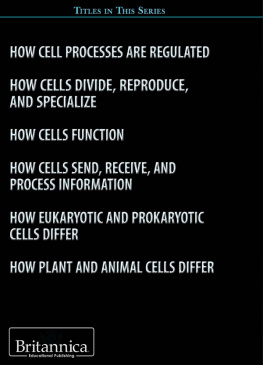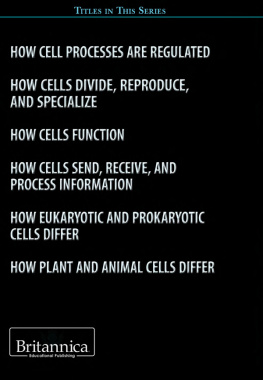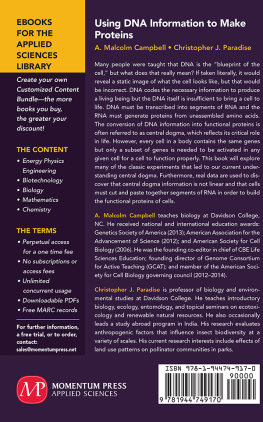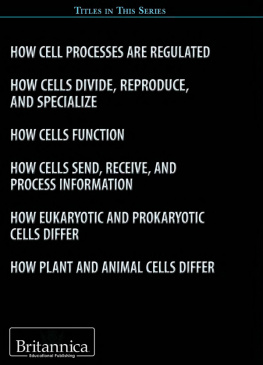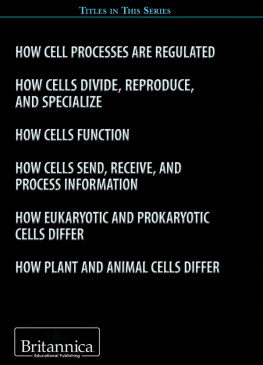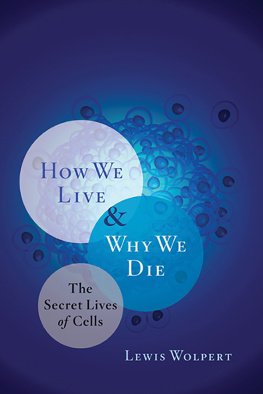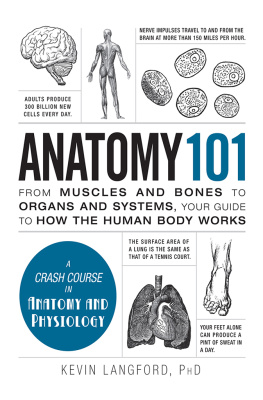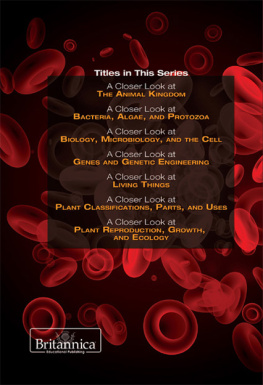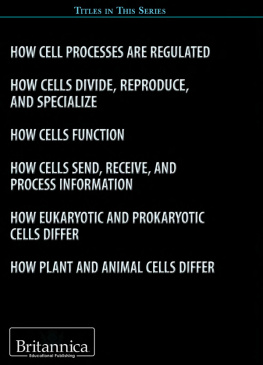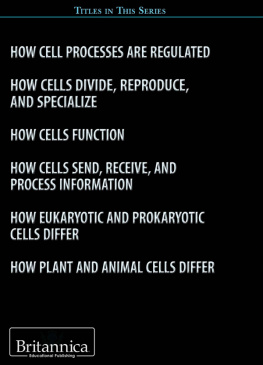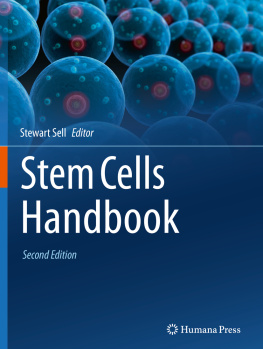
Published in 2015 by Britannica Educational Publishing (a trademark of Encyclopdia Britannica, Inc.) in association with The Rosen Publishing Group, Inc.
29 East 21st Street, New York, NY 10010
Copyright 2015 The Rosen Publishing Group, Inc., and Encyclopdia Britannica, Inc. Encyclopaedia Britannica, Britannica, and the Thistle logo are registered trademarks of Encyclopdia Britannica, Inc. All rights reserved.
Distributed exclusively by Rosen Publishing.
To see additional Britannica Educational Publishing titles, go to rosenpublishing.com.
First Edition
Britannica Educational Publishing
J. E. Luebering: Director, Core Reference Group
Anthony L. Green: Editor, Comptons by Britannica
Rosen Publishing
Hope Lourie Killcoyne: Executive Editor
Kathy Campbell: Senior Editor
Nelson S: Art Director
Nicole Russo: Designer
Cindy Reiman: Photography Manager
Karen Huang: Photo Researcher
Library of Congress Cataloging-in-Publication Data
Coots, Catherine, author.
How cells function/Catherine Coots and Jennifer Viegas.First edition.
pages cm.(The Britannica guide to cell biology)
Includes bibliographical references and index.
ISBN 978-1-6227-5811-1 (eBook)
1. CytologyJuvenile literature. 2. CellsJuvenile literature. I. Viegas, Jennifer, author. II. Title.
QH582.5.C66 2015
571.6dc23
2014022726
Cover (cell illustration) Alex Luengo/Shutterstock.com; cover (background), pp. 1, 3, 4, 5 Sebastian Tomus/Shutterstock.com
CONTENTS
T he concept of homeostasisthat is, that all living organisms maintain a constant internal environmentwas first suggested by Claude Bernard. Bernard was a nineteenth-century French scientist who studied the ways that organisms function. As originally envisioned by Bernard, homeostasis applied to the struggle of a single organism to survive. The concept was later expanded to include any biological system from the cell to the entire biosphere, all the areas of Earth inhabited by living organisms.
Based on core differences in their cell structure, living organisms can be divided into two major groupsprokaryotes and eukaryotes. Bacteria and archaea are prokaryotes. Animals (including humans), plants, fungi, and protists are eukaryotes. All living organisms, despite their uniqueness, have certain biological, chemical, and physical characteristics in common. All are composed of the same basic units, or cells. They have the same chemical substances, which, when analyzed, exhibit noteworthy similarities, even in such differing organisms as bacteria and humans. Because the action of any organism is determined by the manner in which its cells interact and because all cells interact in much the same way, the basic functioning of all organisms is also alike.
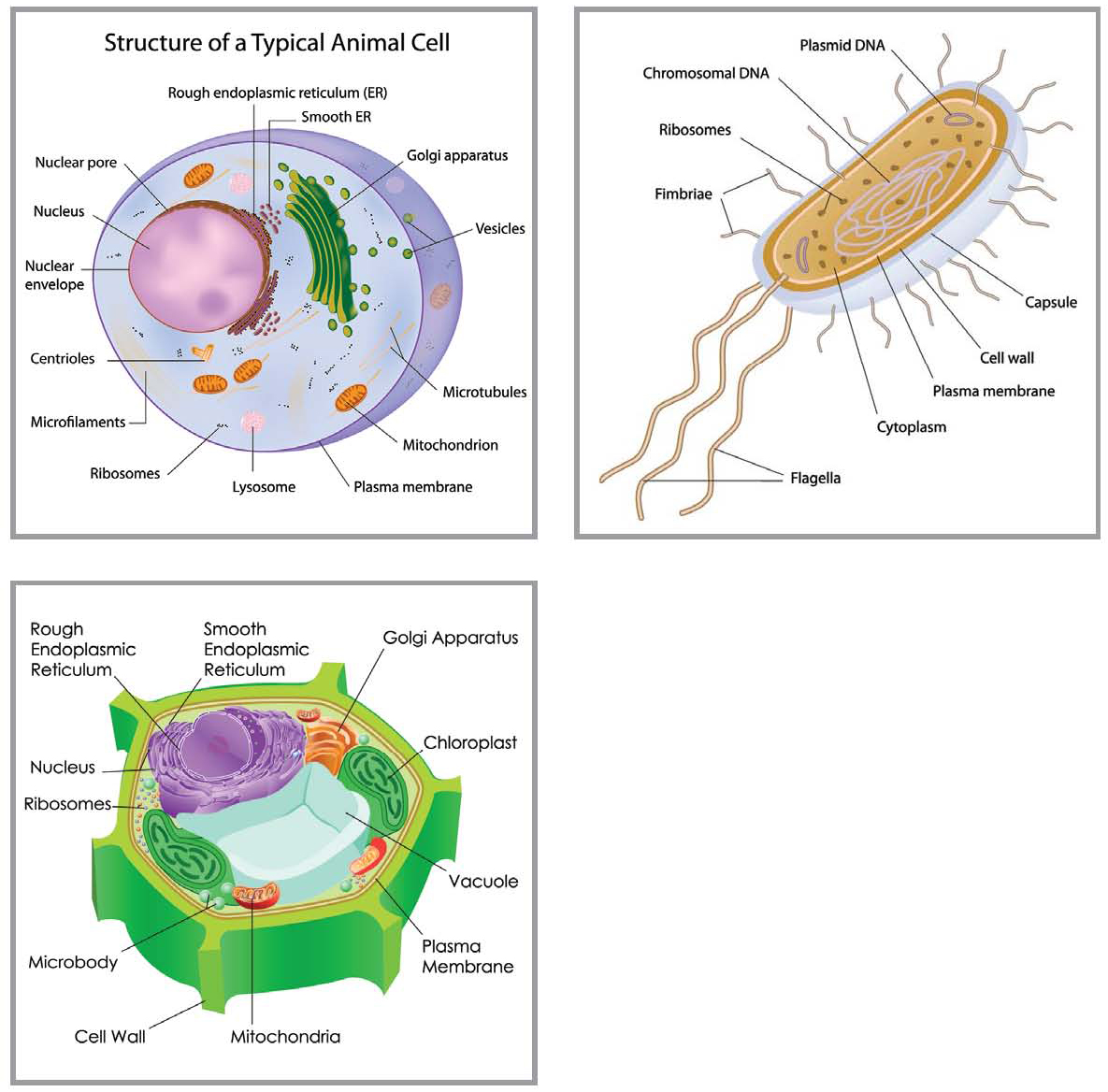
TOP LEFT: A eukaryotic cell contains a cell membrane, cytoplasm, a nucleus, and organelles, which carry out important cellular functions. Alila Medical Media/Shutterstock.com
TOP RIGHT: A prokaryotic cell (such as a bacterium) does not contain a nucleus or organelles. The structure of a typical prokaryotic cell includes a cell wall, a plasmid, and flagella, among other features. Alila Medical Media/Shutterstock.com
BOTTOM LEFT: As a eukaryote, a plant cell contains membrane-bound organelles. It also has a cell wall that surrounds the cell membrane and chloroplasts, which contain chlorophyll. snapgalleria/Shutterstock.com
A common origin of life would explain why in humans or slime moldsand in all forms of life in betweenthe same chemical substance, deoxyribonucleic acid (DNA), accounts for the ability of all living matter to replicate, or copy, itself exactly and to transfer genetic information from parent to offspring. The means for this transfer follow a pattern that is similar in all organisms.
The life processes of every organism are carried out by specific materials assembled in definite structures. Consequently, a living organism can be defined as a system, or structure, that reproduces, changes with its environment over a period of time, and maintains its individuality by constant and continuous metabolism.
To maintain life, an organism repairs or replaces (or both) its structures by a constant supply of the materials of which it is formed. It also keeps its life processes in operation by a steady supply of energy. A major contributing part of an organisms survival is the functioning of its cells.
C ells are always busy. Even when an animal is at rest or sleeping, some form of activity is taking place in the bodys cells. For a long time, scientists have been trying to determine the number of cells that make up the human body. Some researchers estimate that there are 100 trillion cells in the body, but more recent studies put the estimate closer to 37.2 trillion cells. All these cells work to keep an individual breathing, energized, fed, and alive.
Cells themselves are living structures. The English scientist Robert Hooke first described cells and published his work Micrographia about his findings in 1665. He had sliced thin sections of cork to examine under a microscope that he had designed. He saw tiny, boxlike units making up the cork. Hooke called these structures cells because they reminded him of monks cells, or very little rooms, in a monastery. He described similar structures in the tissue of other trees and plants and discerned that in some tissues the cells were filled with a liquid while in others they were empty. He therefore supposed that the function of the cells was to transport substances through the plant.
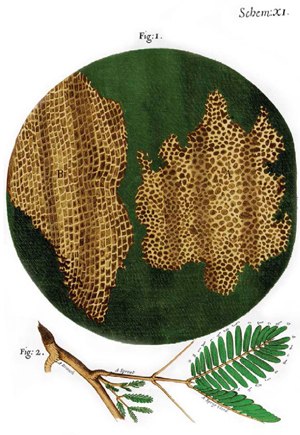
Robert Hookes drawings of the cellular structure of cork and a sprig of sensitive plant appeared in Micrographia (small drawings). He was the first scientist to use the word cell to describe the honeycomb characteristic of cork. Photo Researchers/Getty Images
Cells are the smallest known units of life. Cell size is usually measured in microns (m). A micron is equal to about one millionth of a meter and about 25,000 microns equal 1 inch (2.5 centimeters). The diameter of the average human cell is roughly 10 microns, making it invisible to the naked eye without a microscope. Nothing smaller than a cell conducts the basic functions associated with living. These functions include the ability to take in nutrients and metabolize them. Other functions are synthesizing molecules, providing the cells own energy, and replicating itself to produce succeeding generations.
THE FORMATION OF CELLS
One reason why cells are so active is that they are products of the ever-changing world. Scientists are not yet certain how the first cells formed, but one popular belief is the primordial soup theory. Russian biochemist Aleksandr Oparin first introduced this theory in 1922. His concept was that a primordial organism arose in a brew of already formed organic compounds. According to the primordial soup theory, life began shortly after planet Earth formed about 4.6 billion years ago. At that time, Earths interior was full of molten hot materials that shot explosively from the surface through numerous volcanoes and other surface openings. When the temperature dropped, many scientists believe water vapors, or gases, in the atmosphere turned into showers heavier than any rains known today. These showers may have created the oceans. As water is key to the creation of life as humans know it, the torrential downpour likely set the stage for the birth of cells.

